A rite of Spring around the Cooper manse is giving a respectful nod to Masters Week, the time leading up to the annual Masters Golf Tournament at Georgia’s Augusta National Golf Club. Golf is a major sport in our family. Both of children were encouraged to play to the point they both lettered in high school, and Dear Son takes the time to play golf as often as he can.
I love to watch the Masters Golf Tournament, but my Mister takes it up a notch or two. Okay, to be truthful he takes it at least twenty notches or more and lives through each swing and putt with his favorite players.
You must admit even if you don’t play or watch from the sidelines golf is a game with great history dating back to 15th century Scotland and probably much further than that including the Roman game of paganica where participants used a bent stick to hit a stuffed leather ball. Going back further, the Chinese played chuiwan. Translated the term means “striking small ball.” A scroll by the artist Youquiu that dates to 1368 titled The Autumn Banquet shows a member of the Chinese Imperial court swinging what could be described as a golf club at a small ball attempting to sink the ball into the hole.

The Masters Tournament has a history that can stand on its own. First played in 1934, the tournament has several traditions like no other including the green jacket awarded to each champion beginning in 1948. The Champions Dinner began in 1952 is held the Tuesday before each Masters and is attended by past champions and certain board members of the Augusta National Golf Club. Since 1963, distinguished golfers, many of them past Masters champions such as Arnold Palmer, Jack Nicklaus and Gary Player have hit an honorary tee shot the morning of the first round to signify the commencement of the tournament.
There are also longstanding traditions for the patrons who attend the tournament. Per club rules, people attending the tournament are never referred to as fans or spectators. They are patrons and their cherished passes for the week are referred to as patron badges. Patrons love to snag one of those famous Augusta National pimento cheese sandwiches for just $1.50 each in 2023 and an approved collapsible chair that meets the no armrests requirement can be bought for $30, but don’t get caught running or wearing your hat backwards. Both are frowned upon at Augusta National.
It is said that when Georgia’s own favorite golfing son, Bobby Jones, came across the piece of land that would become the Augusta National Golf Club he said, “Perfect! Many were amazed this perfect piece of land had been lying there through the years waiting for someone to come along and develop it for a golf course, but it hadn’t. The land where Augusta National sits today had a history well before Bobby Jones viewed it.
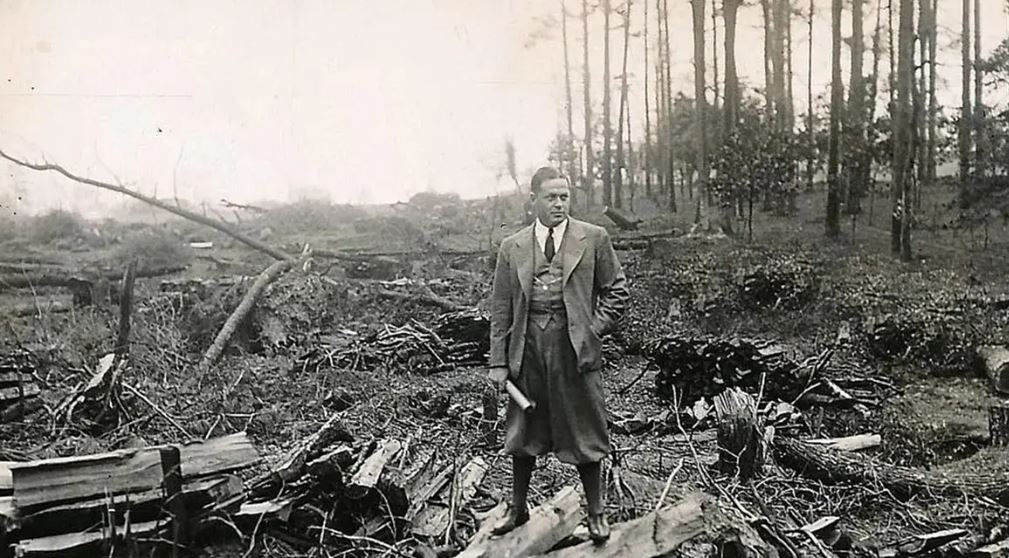
In the 1850s the property that would become Augusta National was owned by Dennis Redmond who was born in Ireland in 1824. He was an editor for The Southern Cultivator, an agrarian journal begun in Augusta, Georgia in 1843. Redmond’s property at Augusta called Fruitland was known for the fruit, ornamental trees, shrubs, vines, roses, evergreens, hedges, and exotic plants he raised there. Though it was built earlier in the 1850s (some sources state 1854), by 1859, the home Redmond built at Fruitland received some notice when it was featured in the book The House: A Pocket Manual of Rural Architecture, or, How to Build Country Houses and Outbuildings because it had been touted as the first home in the South to be built of concrete with walls as thick as eighteen inches. Today, Redmond’s home is even more famous as the clubhouse at Augusta National!
Below is an image of the home as it appeared in the book:
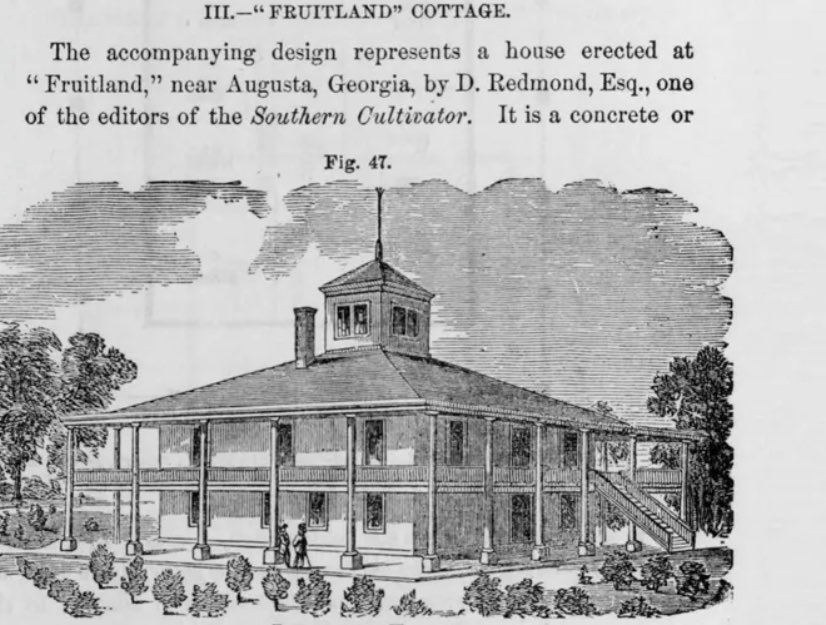
From the book, “…the site of the house…is upon a picturesque elevation in the orchard at Fruitland. It is on the dividing ridge between Rae’s Creek and the Savannah River, and from the peculiar formation of the locality commands a very beautiful prospect of the city of Augusta, the opposite hills of South Carolina, and the surrounding country.”
At some point in 1859 Redmond sold the Fruitland property to Belgian born Louis Mathieu Edouard Berckmans (1801-1883), a horticulturalist who had moved to Georgia from New Jersey and had already established a nursery called Pearmont. Berckmans and his three sons continued the Fruitlands business. They imported many trees and plants from countries all over the world, and the Berckmans are remembered as the reason why Georgia peaches became as famous as they are.
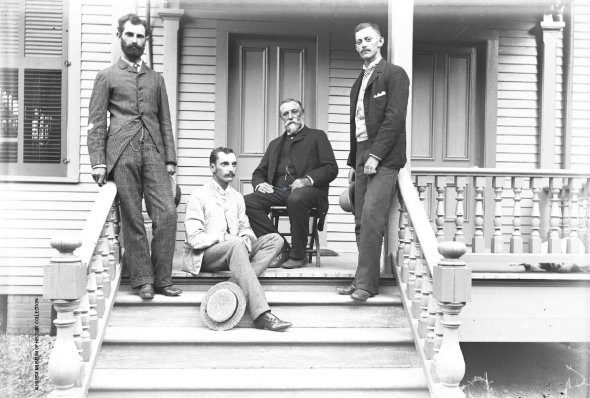
Fruitland Nursery is the reason why there are so many varieties of trees and flowering plants at Augusta National today and why each of the eighteen holes along the course are named for a tree or shrub. The row of sixty-one magnolias that line Magnolia Lane at the course today were planted by the Berckmans prior to the Civil War. Many of the pine trees that spot the course are over 150 years old. The Masters Tournament is known for the beautiful azaleas that blanket the course. Prosper Berckmans is given the credit with making azaleas a “must have” addition to gardens across the South.
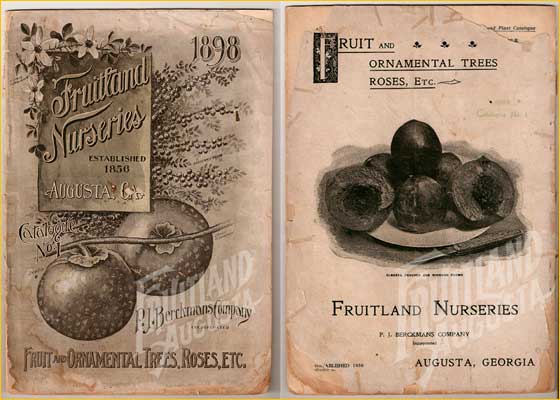
Fruitland Nurseries operated until 1918 when it was sold to an employee, R.L. Wheeler, who continued to operate the business from an adjacent property through the 1960s. When golfer Bobby Jones bought the property with his golf course in mind, he hired two of L.M. E. Berckman’s grandsons to assist with the landscape design realizing they best knew the property.
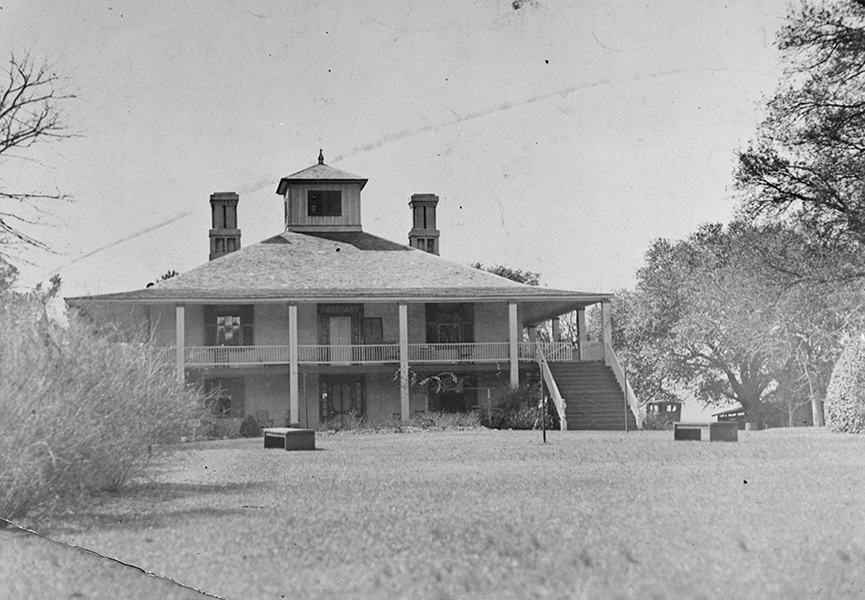
While there are many features of the Augusta National course that have their own stories to tell I’m going to focus on two that involve the presidency of the United States—-the Eisenhower cabin and the Eisenhower Pine.
Dwight David “Ike” Eisenhower (1890-1969) arrived at Augusta National in April 1948 as a five-star U.S. Army general for a two-week stay. He played golf each day and bridge at night. Six months later he would become a member of the club. During the years he was a member Eisenhower made a total of forty-five trips to Augusta National – five before he was in the White House, twenty-nine during his two presidential terms, and eleven more after his second term ended.
Eisenhower loved golf. Some sources estimate he played at least 800 rounds of golf during the eight years he served as president. He installed a putting green on the south lawn of the White House and during inclement weather he hit golf balls into a net in the basement.
With the help of donations from club members a cabin was built for Eisenhower on the grounds of Augusta National in 1953 for a cost of $70,000. However, your idea of a cabin, my idea of a cabin, and Augusta National’s idea of cabin are totally different things. The Eisenhower cabin is a house as seen in the image here. The cabin was built to the specifications of the Secret Service and has an entire lower floor where agents resided when Eisenhower visited Augusta. The cabin served as the first real home President Eisenhower had known since graduating from West Point in 1915 and entering the army. When the Eisenhower wasn’t visiting the cabin, it was used by other club members.
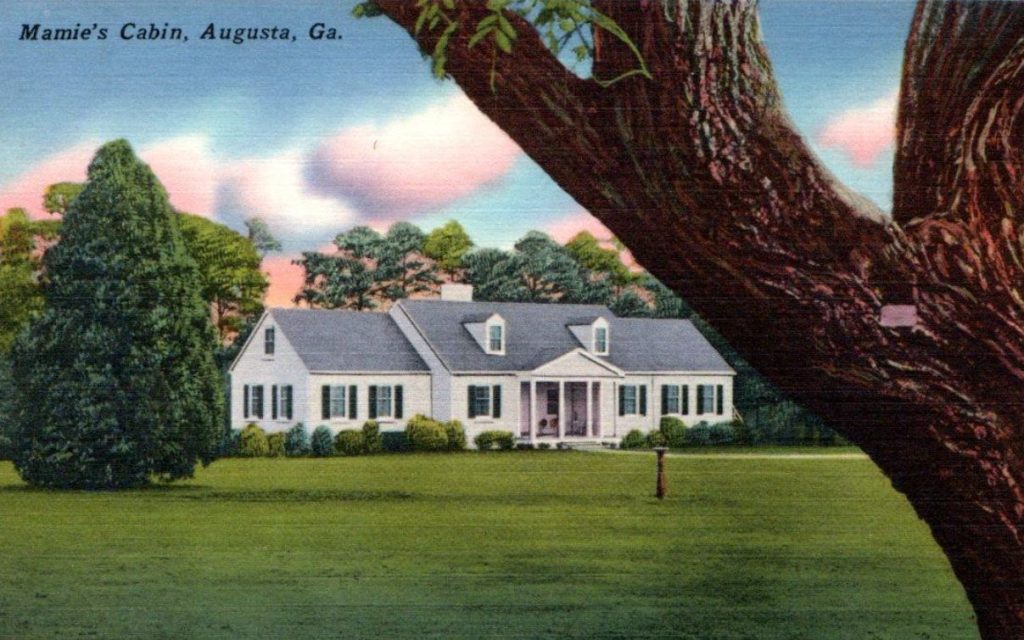
Accommodations were also made for the President Eisenhower to complete his business affairs, the business of the nation, in an office that was provided for him over the club’s pro shop. In fact, it has been reported that the Eisenhower Doctrine where the United States announced it would use force in the Middle East, was announced within a fairway wood of the first tee in 1957. Today Eisenhower’s own cracker barrel sits in the Augusta National Pro Shop. The wood used for the barrel was once part of the White House roof.
Sadly, it was impossible for President Eisenhower to attend a Masters Tournament while he was president. It would have been too disruptive. However, he would usually show up on the following Monday to play a round with the winner. Arnold Palmer remembered Eisenhower as “a regular guy on the golf course and a regular guy period.”
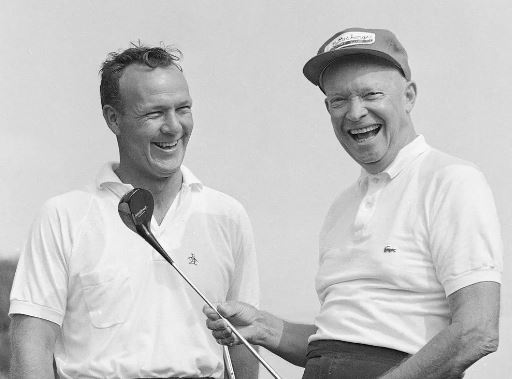
At least once during the coverage for the Masters Tournament you will hear a reporter mention the Eisenhower Pine. The tree in question was a Loblolly Pine that stood sixty feet tall and is estimated to be at least one hundred years old. It was located on the 17th hole and was 210 yards from the tee.
The tree and Eisenhower had quite a contentious relationship. The pine had a bad habit of getting in his way. At a 1956 club meeting Eisenhower addressed the members in attendance and suggested the tree should be cut down. Augusta National’s club president, Clifford Roberts, ruled the President of the United States was out of order and the tree remained. Even so, many golfers had issues with the tree through the years.

The Eisenhower Tree finally succumbed during an ice storm in February 2014. The tree lives on…plaques commemorating the tree was given to club members and Masters champions. Exhibits are on display at the Eisenhower Presidential Library in Abilene, Kansas and at Berckman’s Place, the hospitality facility that is only open during Masters Week beside hole No. 5. The exhibits contain a crosscut of the tree and a digital screen recounting the tree’s history.
Some of the changes to the Augusta National property President Eisenhower proposed were more positive, however. At one point Eisenhower mentioned he had found a perfect place to build a dam for a fishpond. Today the dam is exactly where the President suggested, and the pond is referred to as Ike’s Pond.
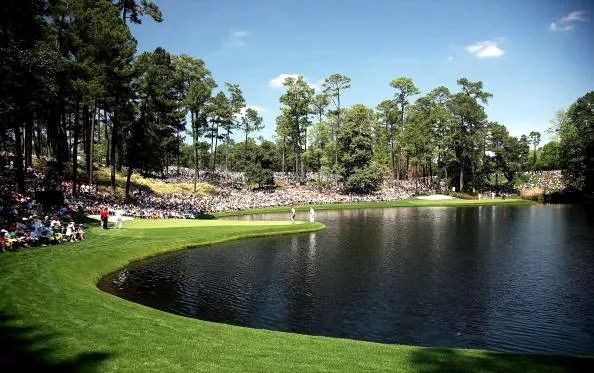
One of the best stories concerning President Eisenhower at Augusta National is the time when the press corps could follow him on a full round of the course. At Rae’s Creek he hit two balls into the water. The President of the United States immediately stripped of his shoes and went after the errant golf balls. The reporters had a very rare moment on their hands, unfortunately I have yet to find a photograph of this moment online.
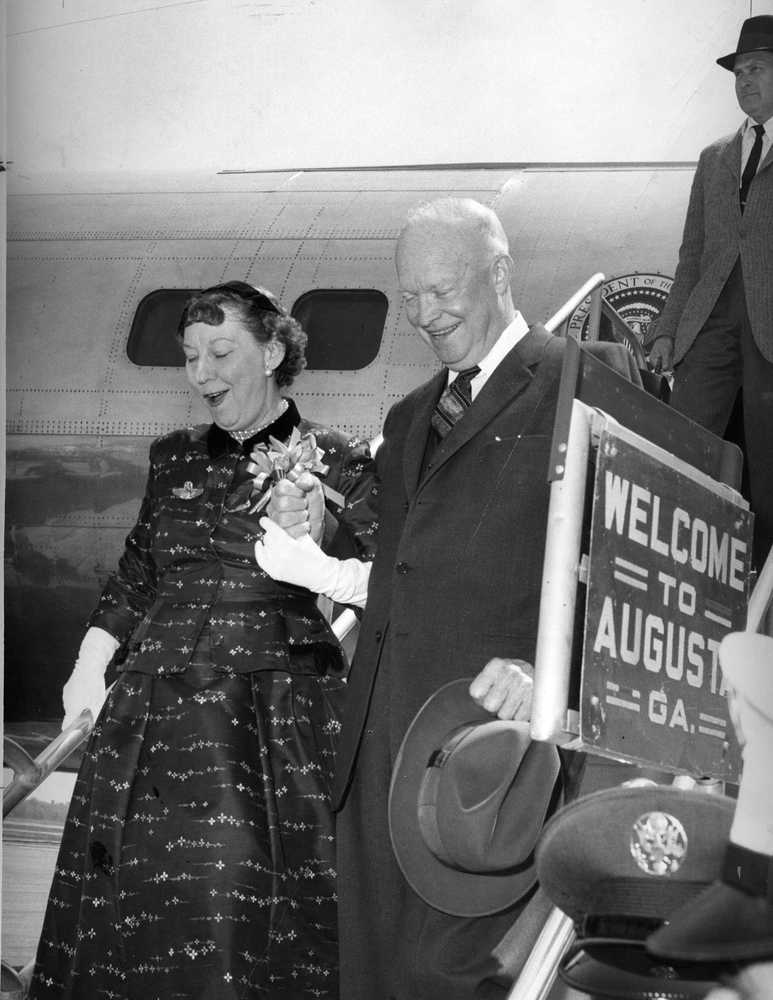
During their visits to Augusta National, the Eisenhower family would attend church at Reid Memorial Presbyterian Church on Walton Way in Augusta. Most sources indicate President Eisenhower attended services there at least eighteen times where he would sit on the third pew on the left, facing the altar. During one visit in to the church in 1954 the congregation was dedicating a new sanctuary. President Eisenhower took part helping to place the cornerstone. Following his death, the church placed a marker on Eisenhower’s pew and dedicated the Redemption Window found in the church’s balcony to him. Today, President Eisenhower’s likeness can be found in a stained-glass window depicting the three wise men offering gifts to the baby Jesus.
In his book Mandate for Change, 1953-1956: The White House Years, Eisenhower wrote about the members of Augusta National Golf Club saying, “It is almost impossible for me to describe how valuable their friendship was to me. Any person enjoys his or her friends; a president needs them, perhaps more intensely at times than anything else.”
If you enjoyed this article, you might like Mamie Pink – A Signature Color regarding First Lady Mamie Eisenhower’s favorite color and how she began a trend that swept across the United States.
For more history regarding Augusta National you might like the book, The Making of the Masters: Clifford Roberts, Augusta National, and Golf’s Most Prestigious Tournament by David Owen.
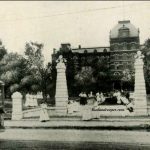
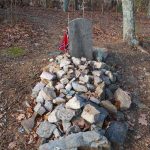
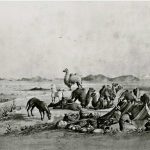
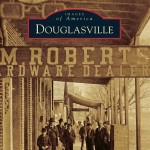
Leave a Reply